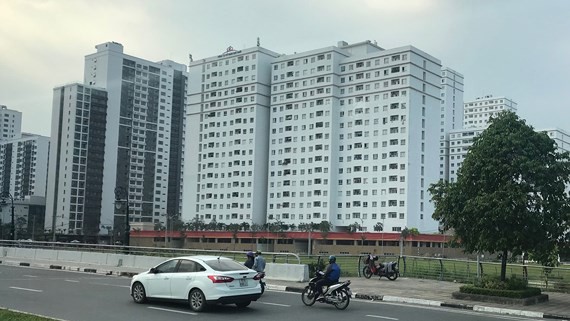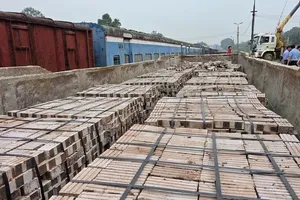
According to the State Bank of Vietnam (SBV)’s a report on the credit outstanding balance for property investment and business activities in the fourth quarter of 2017 , the total value of outstanding credit for the real estate sector reached VND471.022 billion ($20.6 billion) in the end of 2017.
Loans for urban construction projects; loans for housing construction, repair, purchase and rent; and loans for businesses involving other realty products are biggest credit surplus, amounting to over VND100 trillion each.
In a latest report of the Housing and Real Estate Market Management Agency of the Ministry of Construction, the credit surplus in the real estate sector account 8 percent of the total and is still within safe threshold.
In the first five months of this year, credit for sectors bearing high risk was under good control while credit for build-operate-transfer and real estate projects grew by 2.15 percent and 2.19 percent respectively, said the central bank.
As per SBV’s branch in Ho Chi Minh City, the credit growth of the city reached 6.42 percent in the five-month period. It is expected to leap 7.5 percent in the first half of the year. Of the total value of outstanding balance of VND1,890 trillion, up to 76 percent is for production and business activities, 10.8 percent for the real estate sector, and 13.2 percent for securities and consumer purposes.
The rate maintained from 2016 with fluctuation of 10.8-11 percent while in the period 2007-2008, it was 31-33 percent creating “hot depositing” which badly affected realty market. Bad debt in the field also fluctuated from 2 percent to 2.5 percent.
Realizing the risks of property loans, the state bank has issued various warnings, directing commercial banks to offer loans to technically and financially capable project investors only. In the end of 2007, the central bank issued the circular No.19 for safe level in credit institutions which are only allowed to use its short-term capital for loans with the maximum rate of 45 percent in this year and 40 percent for the next year.
Lately, the Housing and Real Estate Market Management Agency has also warned that state bank should redefine the concept of consumer loans, stressing that loans for house purchases. As per the agency, loans for house purchases should not be considered as a kind of consumer loans which bear high risk.
In its financial and economic situation report for 2017 and prospects for 2018, the National Financial Supervisory Commission pointed out that credit for real estate and construction activities surged by 12.2 percent in 2017, accounting for 15.8 percent of the total yet lower than in 2016 with 17.1 percent.
However, consumer loans grew by 65 percent equal to 18 percent of the total, whereas loans for house purchases and repairs made up 52.9 percent.
This trend is still on the rise. Property credit growth in HCMC fells from 10.8 percent in late 2017 to 10.7 percent in the first five months of 2018. Conversely, consumer credit rose from 12.2 percent in early this year to 13.4 percent now meanwhile loans for house purchase represented 40 percent.
There have been some proposals that state bank should separate loans for better control yet it is difficult to do because it depends on consumers’ demand for loan form, head of SBV’s Credit Department Nguyen Quoc Hung said.
Deputy Director of the HCMC branch of the SBV Nguyen Hoang Minh announced that loans for housing purposes are not as risky as it was because the loans are for individuals rather than businesses or other organizations.
Nevertheless, he suggested that the state should instruct commercial banks to assess the value of land and houses and provision of loans must be based on banks’ regulation to tighten consumer loans. Accordingly, borrowers are just given loans worth 50 percent of the land value, instead of the previous 70-80 percent.
In reality, some commercial banks still provide individual customers loans for land and housing purchase worth 75 percent of the value in line with market prices. The problem is that commercial banks must control their staffs who might offer loans for individual borrowers to buy two or three houses affecting consumer’s capacity to repay.
























